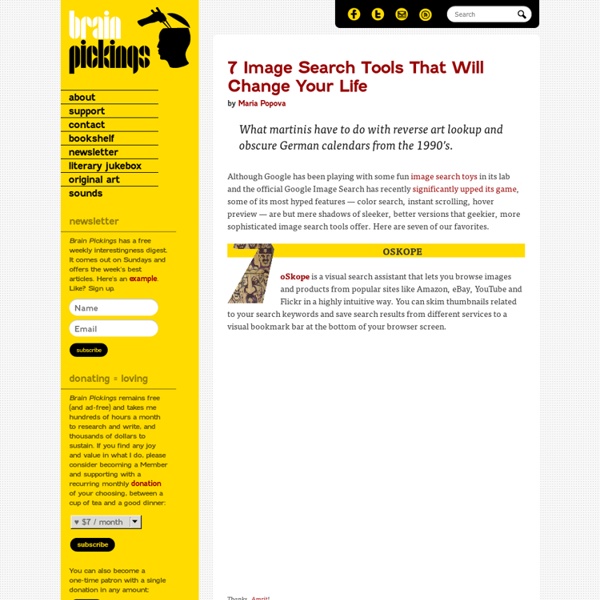Visual Storytelling: New Language for the Information Age
by Maria Popova We now live in a world where information is potentially unlimited. Information is cheap, but meaning is expensive. Where is the meaning?
‘App gap’ emerges highlighting savvy mobile children
You’ve heard of the digital divide, but how about the app gap? That’s the new term coined by Common Sense Media, which conducted a study looking at the amount of time children under the age of 8 are spending in front of screens. The study found that there is a growing rift between children from wealthier families who spend more time involved in mobile apps and lower-income children who are more involved in traditional TV watching. Common Sense Media, a nonprofit group based in San Francisco, surveyed almost 1,400 parents and found that 47 percent of families with incomes more than $75,000 had downloaded apps for their children, while only 14 percent of families earning less than $30,000 had done so.
Say Hello to Learning Interface Design
"So what do you do?" asks the aging hipster in the faux retro tee. "Oh, me?
The Simple Things You Should Be Doing Every Morning (But Aren't)
The alarm sounds and you're off: Onto checking emails, finding car keys and, if you're lucky, brushing your hair. The madness, the rush of it all -- it's got to stop. Adding intention into your morning routine is in your best interest: It sets the tone for the rest of your day, and may ultimately reflect how productive, happy and calm you'll be for your following waking hours. You have the power to wake up on the right side of the bed every single morning for the rest of your life.
Interface Design Guidelines
Marshall G. JonesNorthern Illinois University Email: mgjones@niu.edu James R.
How Online Innovators Are Disrupting Education - Jason Orgill and Douglas Hervey
by Jason Orgill and Douglas Hervey | 8:26 AM November 4, 2011 Four years ago Harvard Business School Professor Clayton Christensen predicted that online education would take off slowly and then hit everyone by surprise: the S-curve effect. And indeed, while it initially grew slowly, online education has exploded over the past several years. According to the 2010 Sloan Survey of Online Learning, approximately 5.6 million students took at least one web-based class during the fall 2009 semester, which marked a 21% growth from the previous year.
Writing Microcopy: Tips and Pointers
Do you spend hours writing a four or five word phrase or brief instructions? Do you feel like an obsessive perfectionist? Actually, that’s normal. Clear and concise microcopy is one of the most difficult types of writing to achieve. Microcopy refers to the brief copy that we use in instructions and user interfaces to guide and direct user actions as well as to respond to input.
Moving UX into a position of corporate influence: Whose advice really works?
I'll be leading an "interactive session" at CHI 2007 entitled, "Moving UX into a Position of Corporate Influence: Whose Advice Really Works?" Here is the abstract: "Professionals working to move user experience (UX) into a position of corporate influence are impeded by conflicting recommendations, including those regarding the roles of documenting and evangelizing UX work, ownership of UX, organizational positioning, calculating return on investment, and conducting "ethnographic" research. In this interactive session, a group of senior UX management personnel who have moved UX into positions of rapidly increasing influence in their varied places of work debate their different perspectives and approaches to help resolve the conflicting recommendations and generate some new and improved guidance."



